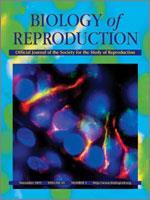The placenta is the intermediary between the mother and fetus, and its primary role is to provide for the appropriate growth of the fetus. A suboptimal in utero environment has been shown to differentially affect the health of offspring, depending on their sex. Here we show that excess maternal glucocorticoids administered in midgestation (Day 20, 0.5 gestation in the spiny mouse) for 60 h, have persisting effects on the placenta that differ by fetal sex, placental region, and time after glucocorticoid exposure. Dexamethasone (DEX) exposure altered placental structure and mRNA expression from male and female fetuses both immediately (Day 23) and 2 wk posttreatment (Day 37). The immediate consequences (Day 23) of DEX were similar between males and females, with reductions in the expression of IGF1, IGF1R, and SLC2A1 in the placenta. However, by Day 37, the transcriptional and structural response of the placenta was dependent on the sex of the fetus, with placentas of male fetuses having an increase in GCM1 expression, a decrease in SLC2A1 expression, and an increase in the amount of maternal blood sinusoids in the DEX-exposed placenta. Female placentas, on the other hand, showed increased SLC2A1 and MAP2K1 expression and a decrease in the amount of maternal blood sinusoids in response to DEX exposure. We have shown that the effect of a brief glucocorticoid exposure at midgestation has persisting effects on the placenta, and this is likely to have ongoing and dynamic effects on fetal development that differ for a male and female fetus.
How to translate text using browser tools
27 July 2011
The Placental Response to Excess Maternal Glucocorticoid Exposure Differs Between the Male and Female Conceptus in Spiny Mice
Bree A. O'Connell,
Karen M. Moritz,
Claire T. Roberts,
David W. Walker,
Hayley Dickinson
ACCESS THE FULL ARTICLE

Biology of Reproduction
Vol. 85 • No. 5
November 2011
Vol. 85 • No. 5
November 2011
developmental origins of health and disease
gene expression
sex
stress
trophoblast




